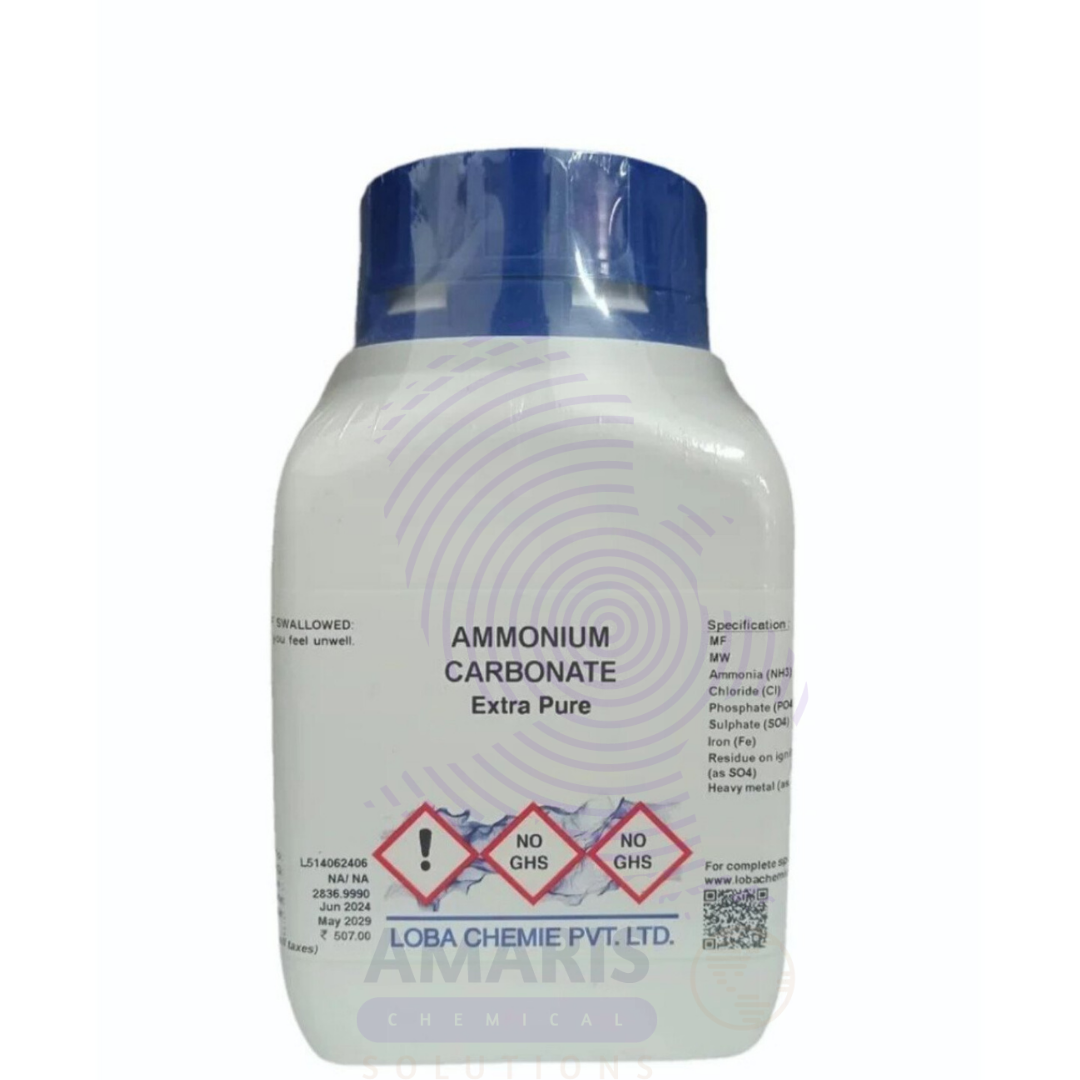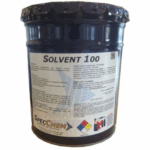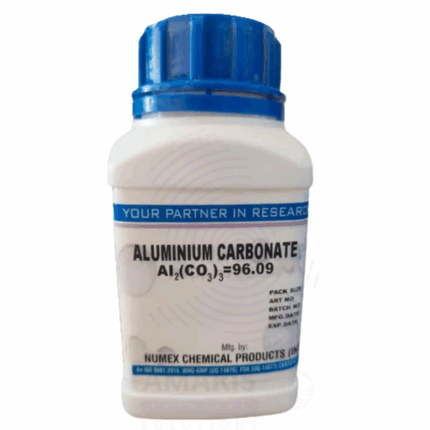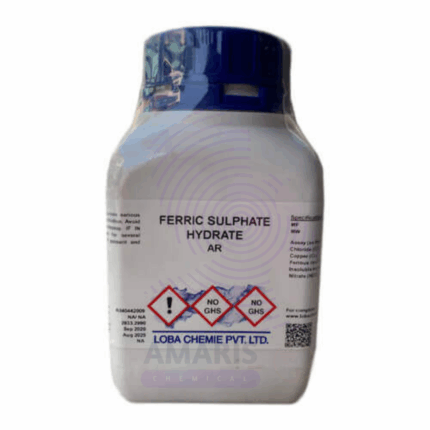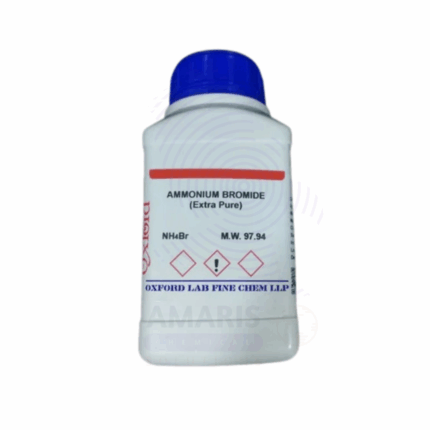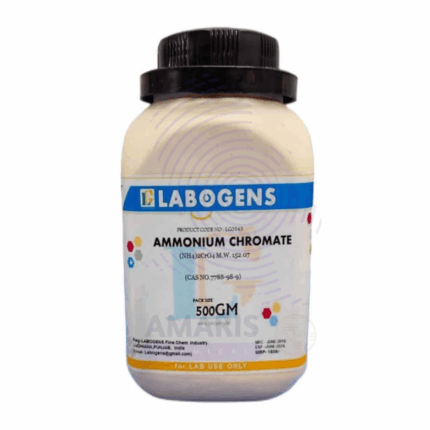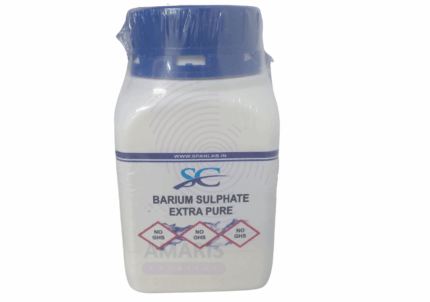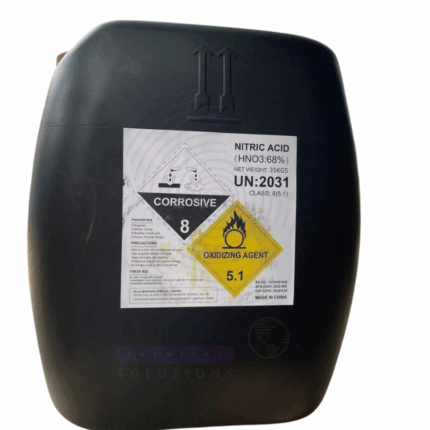
Ammonium Carbonate Extra Pure
$ 18.00 Original price was: $ 18.00.$ 17.34Current price is: $ 17.34.
Ammonium Carbonate Extra Pure is a high-quality, white crystalline solid widely used across various scientific, industrial, and food-related applications. Manufactured to stringent purity standards, this compound is ideal for laboratories and processes that demand high-grade reagents. With its characteristic ammonia-like odor and ability to decompose upon heating, ammonium carbonate plays a versatile role in both chemical reactions and physical processes.
In aqueous solution, ammonium carbonate breaks down into ammonium bicarbonate and ammonium carbamate, further releasing ammonia (NH₃) and carbon dioxide (CO₂) upon heating. This property makes it especially useful in applications that require controlled gas release or temporary pH modification.
Ammonium Carbonate Extra Pure
Primary Uses
- Reagent in Analytical Chemistry
- Used in qualitative analysis for precipitating metal carbonates (e.g., calcium, barium) in classic group tests.
- Volatile Buffer Component
- Applied in mass spectrometry sample prep and protein analysis due to its decomposable, low-residue nature.
- Source of Ammonia and Carbon Dioxide
- Releases NH₃ and CO₂ on heating or exposure to moisture, making it useful for gas evolution studies and simulations.
- Protein Precipitation in Biochemistry
- Occasionally used to precipitate proteins or enzymes under specific pH and ionic conditions.
- Educational Demonstrations in Decomposition and Gas Reactions
- Ideal for classroom demonstrations of thermal decomposition, gas evolution, and equilibrium systems.
Secondary Uses
- Leavening Agent Studies in Food Chemistry Labs
- Investigated for its historical and experimental role as a leavening agent, particularly in controlled baking simulations.
- Simulation of Biological Ammonia Cycles
- Used in ecological or biochemical models of nitrogen metabolism and urea breakdown.
- Preparation of Ammonium-Based Compounds
- Acts as a precursor for synthesis of other ammonium salts, including lab-made fertilizers or reagents.
- pH Adjustment in Non-Aqueous Systems
- Used in specialized buffer systems requiring a mild, temporary pH shift.
- Fume Generation in Insect Behavior Studies
- Sometimes used in entomology research to release ammonia vapor for attracting or repelling certain insects in lab trials.
| PACK SIZE |
500 grams Plastic Tin |
|---|
1. Basic Identification Attributes
- Chemical Name: Ammonium Carbonate
- CAS Number: 10361-29-2 (for commercial mixture) or 506-87-6 (pure compound)
- HS Code: 28369900 (Carbonates; other than sodium, potassium, or lithium)
- Molecular Formula: (NH₄)₂CO₃ (pure form)
- Synonyms:
- Hartshorn salt
- Sal volatile
- Ammonium sesquicarbonate (common commercial mixture)
- Carbonic acid diammonium salt
- Baker’s ammonia
2. Physical & Chemical Properties
- Physical State: Solid (white crystalline powder or lumps)
- Color & Odor: White; sharp, ammonia-like odor
- Boiling Point: Decomposes before boiling
- Melting Point: ~58°C (decomposes to NH₃, CO₂, and H₂O)
- Density/Specific Gravity: ~1.5 g/cm³
- Solubility:
- Water: Soluble (~100 g/L at 20°C)
- Alcohol: Insoluble
- pH Level: ~8.0–9.0 (in 5% aqueous solution)
- Vapor Pressure: Releases ammonia and carbon dioxide vapors on heating
- Flash Point: Not flammable
- Autoignition Temperature: Not applicable
- Viscosity: Not applicable (solid)
3. Safety & Hazard Attributes
- Hazard Class (GHS):
- Eye Irritation (Category 2A)
- Skin Irritation (Category 2)
- Acute Toxicity (Inhalation, Category 4)
- NFPA Ratings:
- Health: 2
- Flammability: 0
- Reactivity: 1
- Exposure Limits:
- OSHA PEL for ammonia: 50 ppm
- ACGIH TLV for ammonia: 25 ppm (TWA), 35 ppm (STEL)
- Reactivity:
- Decomposes readily in moist air or when heated
- Reacts with acids to release CO₂ gas
- May release irritating ammonia fumes
4. Storage & Handling Attributes
- Storage Conditions:
- Store in airtight containers in a cool, dry, well-ventilated place
- Protect from heat and moisture
- Incompatible Materials:
- Acids, oxidizing agents, strong bases
- Container Type:
- HDPE or glass containers with tight lids
- Shelf Life & Expiration Date:
- ~1–2 years if properly sealed; decomposes gradually when exposed to air
- Special Handling Requirements:
- Handle in a fume hood or well-ventilated area
- Use gloves, goggles, and avoid breathing vapors or dust
5. Regulatory & Compliance Attributes
- Regulatory Status:
- Listed under TSCA, REACH
- Approved for use in laboratories and food-grade applications (when applicable)
- Transportation Restrictions:
- Not regulated for transport under standard lab quantities
- Waste Disposal Method:
- Neutralize and dispose in accordance with local environmental regulations
- Avoid releasing fumes into enclosed spaces
6. Environmental & Health Impact
- Ecotoxicity:
- Low; ammonium and carbonate ions may contribute to nutrient loading in water
- Persistence in Environment:
- Decomposes into ammonia, carbon dioxide, and water
- Carcinogenicity/Mutagenicity:
- Not classified as carcinogenic or mutagenic
- Biodegradability:
- Inorganic; rapidly decomposes into naturally occurring compounds
SAFETY PRECAUTIONS
- Personal Protective Equipment (PPE):
- Wear a lab coat, chemical splash goggles, and chemical-resistant gloves (e.g., nitrile).
- Use a dust mask or respirator if handling large amounts or if dust is generated.
- Handling:
- Handle in a well-ventilated area or under a fume hood—decomposes to release ammonia gas.
- Avoid breathing dust or vapors.
- Prevent contact with skin, eyes, and clothing.
- Do not mix with acids, as this will release carbon dioxide and ammonia gas.
- Storage:
- Store in a tightly sealed container in a cool, dry, well-ventilated place.
- Protect from heat, moisture, and direct sunlight.
- Avoid contact with acidic or oxidizing substances.
- Hygiene Measures:
- Wash hands and exposed areas thoroughly after handling.
- Avoid eating, drinking, or smoking in the lab.
- Clean any spills promptly to prevent exposure to decomposed vapors.
FIRST AID MEASURES
- Inhalation:
- Move the person to fresh air immediately.
- If breathing becomes difficult or irritation occurs, administer oxygen and seek medical attention.
- Monitor for symptoms like coughing, shortness of breath, or sore throat.
- Skin Contact:
- Remove contaminated clothing.
- Rinse skin thoroughly with soap and water.
- Seek medical attention if irritation develops or persists.
- Eye Contact:
- Immediately flush eyes with plenty of water for at least 15 minutes.
- Keep eyelids open and remove contact lenses if present.
- Seek medical attention if irritation continues.
- Ingestion:
- Rinse mouth with water.
- Do not induce vomiting.
- If the person is conscious, give water or milk to dilute.
- Seek immediate medical help due to potential irritation of the digestive tract.
FIRE FIGHTING MEASURES
- Suitable Extinguishing Media:
- Use water spray, dry chemical powder, foam, or carbon dioxide (CO₂) depending on surrounding materials.
- Specific Hazards:
- Not flammable, but decomposes upon heating to release ammonia and carbon dioxide.
- Vapors may be irritating or toxic in confined areas.
- Protective Equipment for Firefighters:
- Wear full protective clothing and a self-contained breathing apparatus (SCBA).
- Firefighting Instructions:
- Cool exposed containers with water spray.
- Avoid inhaling decomposition gases.
- Control runoff to avoid environmental contamination.


 Preservatives(food)
Preservatives(food) Flavor Enhancers
Flavor Enhancers Acidulants
Acidulants Sweeteners
Sweeteners Antioxidants
Antioxidants Colorants(food)
Colorants(food) Nutraceutical Ingredients (food)
Nutraceutical Ingredients (food) Nutrient Supplements
Nutrient Supplements Emulsifiers
Emulsifiers
 Collectors
Collectors Dust Suppressants
Dust Suppressants Explosives and Blasting Agents
Explosives and Blasting Agents Flocculants and Coagulants
Flocculants and Coagulants Frothers
Frothers Leaching Agents
Leaching Agents pH Modifiers
pH Modifiers Precious Metal Extraction Agents
Precious Metal Extraction Agents
 Antioxidants(plastic)
Antioxidants(plastic) Colorants (Pigments, Dyes)
Colorants (Pigments, Dyes) Fillers and Reinforcements
Fillers and Reinforcements Flame Retardants
Flame Retardants Monomers
Monomers Plasticizers
Plasticizers Polymerization Initiators
Polymerization Initiators Stabilizers (UV, Heat)
Stabilizers (UV, Heat)
 Antifoaming Agents
Antifoaming Agents Chelating Agents
Chelating Agents Coagulants and Flocculants
Coagulants and Flocculants Corrosion Inhibitors
Corrosion Inhibitors Disinfectants and Biocides
Disinfectants and Biocides Oxidizing Agents
Oxidizing Agents pH Adjusters
pH Adjusters Scale Inhibitors( water)
Scale Inhibitors( water)
 Antioxidants(cosmetic)
Antioxidants(cosmetic) Emollients
Emollients Fragrances and Essential Oils
Fragrances and Essential Oils Humectants
Humectants Preservatives
Preservatives Surfactants(cosmetic)
Surfactants(cosmetic) Thickeners
Thickeners UV Filters
UV Filters
 Fertilizers
Fertilizers Soil Conditioners
Soil Conditioners Plant Growth Regulators
Plant Growth Regulators Animal Feed Additives
Animal Feed Additives Biostimulants
Biostimulants Pesticides (Herbicides, Insecticides, Fungicides)
Pesticides (Herbicides, Insecticides, Fungicides)
 Active Pharmaceutical Ingredients (APIs)
Active Pharmaceutical Ingredients (APIs) Excipients
Excipients Solvents(pharmaceutical)
Solvents(pharmaceutical) Antibiotics
Antibiotics Antiseptics and Disinfectants
Antiseptics and Disinfectants Vaccine Adjuvants
Vaccine Adjuvants Nutraceutical Ingredients (pharmaceutical)
Nutraceutical Ingredients (pharmaceutical) Analgesics & Antipyretics
Analgesics & Antipyretics
 Analytical Reagents
Analytical Reagents Solvents(lab)
Solvents(lab) Chromatography Chemicals
Chromatography Chemicals Spectroscopy Reagents
Spectroscopy Reagents microbiology-and-cell-culture-reagents
microbiology-and-cell-culture-reagents Molecular Biology Reagents
Molecular Biology Reagents Biochemical Reagents
Biochemical Reagents Inorganic and Organic Standards
Inorganic and Organic Standards Laboratory Safety Chemicals
Laboratory Safety Chemicals Specialty Laboratory Chemicals(Special Laboratory Equipment)
Specialty Laboratory Chemicals(Special Laboratory Equipment)
 Demulsifiers
Demulsifiers Hydraulic Fracturing Fluids
Hydraulic Fracturing Fluids Scale Inhibitors(oil)
Scale Inhibitors(oil) Surfactants(oil)
Surfactants(oil) Drilling Fluids
Drilling Fluids
 Dyes and Pigments
Dyes and Pigments Bleaching Agents
Bleaching Agents Softening Agents
Softening Agents Finishing Agents
Finishing Agents Antistatic Agents
Antistatic Agents
 Admixtures
Admixtures Waterproofing Agents
Waterproofing Agents Sealants and Adhesives
Sealants and Adhesives Curing Compounds
Curing Compounds Concrete Repair Chemicals
Concrete Repair Chemicals Anti-Corrosion Coatings
Anti-Corrosion Coatings
 Surfactants(cleaning)
Surfactants(cleaning) Builders
Builders Enzymes
Enzymes Solvents (Cleaning)
Solvents (Cleaning) Fragrances
Fragrances
 Electronic Chemicals
Electronic Chemicals Catalysts
Catalysts Lubricants
Lubricants Photographic Chemicals
Photographic Chemicals Refrigerants
Refrigerants Automotive chemicals
Automotive chemicals Pyrotechnic Chemicals
Pyrotechnic Chemicals
 Biodegradable Surfactants
Biodegradable Surfactants Bio-based Solvents
Bio-based Solvents Renewable Polymers
Renewable Polymers Carbon Capture Chemicals
Carbon Capture Chemicals Wastewater Treatment Chemicals
Wastewater Treatment Chemicals
 Pigments
Pigments Solvents(paint)
Solvents(paint) Specialty Coatings
Specialty Coatings Binders/Resins
Binders/Resins Additives
Additives Driers
Driers Anti-Corrosion Agents
Anti-Corrosion Agents Functional Coatings
Functional Coatings Application-Specific Coatings
Application-Specific Coatings
 Fresh Herbs
Fresh Herbs Ground Spices
Ground Spices Whole Spices
Whole Spices Spice Blends
Spice Blends Dried Herbs
Dried Herbs
 Leavening Agents
Leavening Agents Dough Conditioners
Dough Conditioners Flour Treatments
Flour Treatments Fat Replacers
Fat Replacers Decoratives
Decoratives Preservatives(baking)
Preservatives(baking)
 Plasticizers & Softeners
Plasticizers & Softeners Reinforcing Agents
Reinforcing Agents Adhesion Promoters
Adhesion Promoters Vulcanizing Agents
Vulcanizing Agents Antidegradants
Antidegradants Blowing Agents
Blowing Agents Fillers & Extenders
Fillers & Extenders Accelerators & Retarders
Accelerators & Retarders